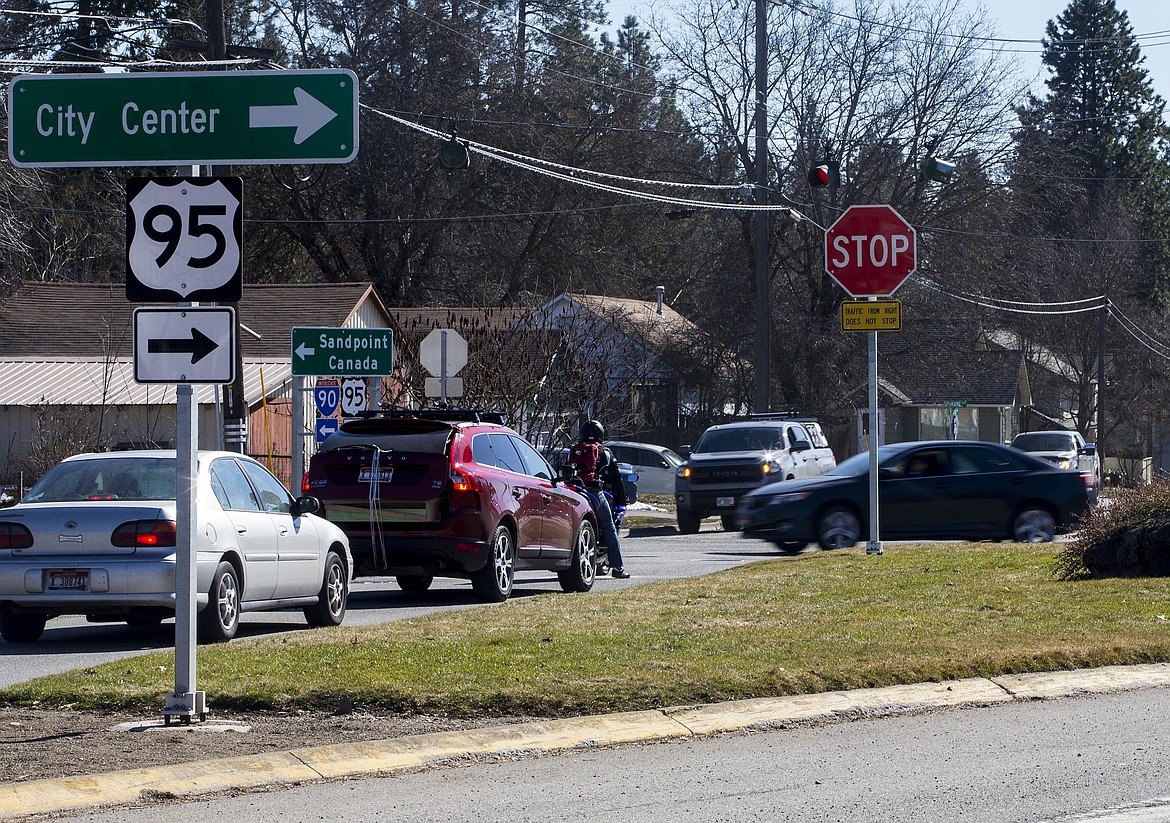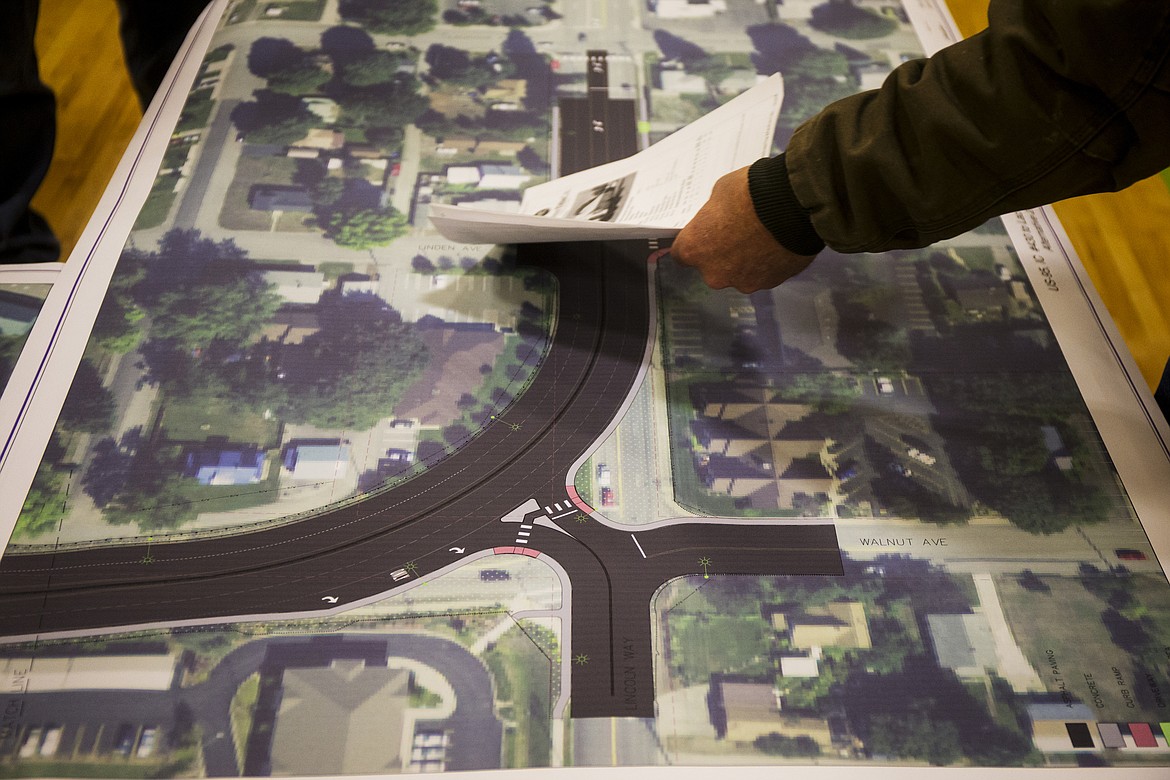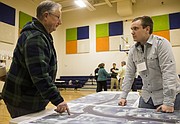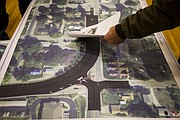Beware of the bottleneck
By RALPH BARTHOLDT
Staff Writer
COEUR d’ALENE — Even as a kid growing up in Coeur d’Alene, Kyle Schrader remembers the southern gateway to town as a funky crosshatch of stopping, sharp-turning, merging or patiently waiting motorists caught in the bottleneck of U.S. 95.
As a project engineer for the Idaho Transportation Department, Schrader is now in a position to broker change.
At a workshop Monday that included a large roadmap spread on a table at the Winton Elementary School gymnasium, Schrader fielded questions and explained the highway department’s motivation for improving an intersection at Walnut Avenue, Lincoln Way and U.S. 95 on the southern edge of Coeur d’Alene.
“We’re trying to minimize accidents and reduce conflict points,” Schrader said.
The section of the highway between Upriver Road, south of the Spokane River, and Linden Avenue, which includes the U.S. 95-Walnut Avenue-Lincoln Way intersection, is one of the only remaining two-lane sections between Worley and Athol, Schrader said.
Between 2011 and 2016, 47 crashes were documented at the amalgam of converging, merging and crossing roadways where northbound 95 makes a dogleg as it heads toward Ironwood Drive and Interstate 90, while southbound traffic sweeps along the perimeter of a neighborhood before crossing the Spokane River Bridge.
The many diverging, crossing or merging options at the intersection make for 34 conflict points — potential areas a wreck could occur. If the state is given the final green light, the new plans would reduce the danger potential to 4 conflict points, according to the highway department.
More than 14,570 vehicles pass through the intersections each day, according to the state. In two decades, 20,520 motorists per day are expected to navigate the doglegs, if improvements aren’t forthcoming.
The proposed $5.4 million improvements at the site, scheduled to be done in 2020 if the work is approved, include adding an additional lane in each direction of the highway and modifying access to cross streets.
The changes are problematic for Annie Mote, who lives on Hubbard Avenue and has for years used the interchange to head south from U.S. 95 onto Lincoln Way. The alternative designs proposed by the state would limit access from side streets such as Walnut and Lincoln Way to the highway.
“They are going to do what needs to be done,” Mote said.
Jim Wyatt, who has lived on the west side of the highway near the interchange for 24 years, has grown accustomed to the honking of annoyed motorists at the funky three-way intersection.
“When we sit in the yard and hear the honking,” Wyatt said. “We call them love honks. Someone is admiring someone else’s driving right now.”
Wyatt is looking forward to a respite from angry motorists laying on their horns.
“It’s going to make it a lot nicer,” he said.
Because of high traffic volumes and confusing layout, the intersection is a high risk for crashes and near misses, and does not perform well during peak hours, according to the state. The project will realign 95 and eliminate some of the “high risk turning movements to and from the local side streets, improving the safety and mobility of the traveling public through the intersection,” according to ITD literature.
Berl Dougall, who lives near the sharp turns, hears truckers who meet the curves at a too-high speed, use their compression brakes throughout the night.
“It’s just obnoxious,” he said. He hopes the realignment will put an end to the noise.
The project, which started in 2003, has seen its share of improvement plans but until now, none had reached fruition.
“There has been a lot of looks at this intersection in the past,” G.E. Siegford, project engineer for HMH Engineering, which designed the plans, said.
The latest plans seem to be the most feasible.
Comments gathered at Monday’s open house will be incorporated into the project’s next phase: deciding which plan is best.







